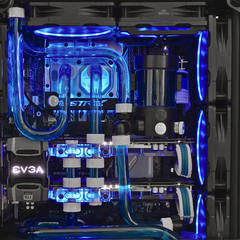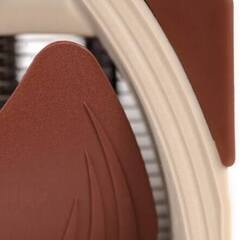-
Posts
5,365 -
Joined
-
Last visited
Awards
This user doesn't have any awards
Profile Information
-
Gender
Male
-
Location
Germany
-
Biography
Got interested in building computers from using GPU machines at work. Casual gamer.
-
Occupation
Biochemist
-
Member title
Citations!
System
-
CPU
AMD Ryzen™ 9 3950X
-
Motherboard
ASUS ROG CROSSHAIR VI HERO (X370)
-
RAM
G.Skill RipJaws V 64GB (4x16GB) DDR4
-
GPU
ASUS ROG STRIX GTX 1080 Ti in 2-way SLI
-
Case
Fractal Design Meshify C
-
Storage
Samsung 970 EVO & Samsung 860 EVO x3
-
PSU
Corsair RM750x
-
Display(s)
ASUS ROG Swift PG279Q
-
Cooling
Custom Loop
Recent Profile Visitors
For Science!'s Achievements
-
Have you tried this with all other PSU cables apart from the 24-pin ATX removed? It sounds like something is triggering some sort of protection
- 13 replies
-
- power supply
- psu
-
(and 1 more)
Tagged with:
-

Corrosion of demineralized water?
For Science! replied to Potattoe's topic in Custom Loop and Exotic Cooling
You should always have inhibitor additives, and change water on a regular schedule. -

Best source/setup for controlling fan speed?
For Science! replied to ShadyHost's topic in Custom Loop and Exotic Cooling
Set pump to a constant speed, and fans tied to coolant temperature. Nothing else required. -

The Best Documented PC Coolants
For Science! replied to For Science!'s topic in Custom Loop and Exotic Cooling
I have not checked recently, but if you have specific interests in a particular coolant, I could have a look. -

Standalone watercooling controller (Aquaero?)
For Science! replied to BotDamian's topic in Custom Loop and Exotic Cooling
IIRC most BIOSes I have dealt with let you save profiles on USB sticks that you can load up quickly. I personally think the chances of a small controller dying is much higher than a well-cooled motherboard dying, so to me it feels like your solution to the problem is simply another point of failure. -

Standalone watercooling controller (Aquaero?)
For Science! replied to BotDamian's topic in Custom Loop and Exotic Cooling
I don't quite see the logic of "I want the cooling controls to be functional in case the main board breaks" --> If the mainboard is dead, why bother having a functional cooling system for it? I control my watercooling system through BIOS using 2-pin temperature headers on the mainboard itself. In the past I have also integrated flow sensors through fan_headers. These are OS agnostic settings, so fan curves are applied across all OSes, including linux. -

Printer suggestions for experienced hobbyist.
For Science! replied to Daftlander's topic in Hobby Electronics
Imo Bambu labs has not been around for long enough to know its true "long-term" potential. Especially given its relatively closed ecosystem and proprietary parts, its a bit hazy outlook. Furthermore, if you look at issues with the AMS system, you can see there are teething problems that need addressing by the company. Obviously you are in the prusa territory, I personally really enjoyed using the Mk3S+(ish) and can recommend it. If input shaping ever releases on the Mk4, that would also make it faster generally too, -
As I said: So no, I am not okay with what is being done with the moon by Samsung. The comment you quoted me on is specifically about whether only a true-single exposure is considered a photo or not.
-
I'll just grab my tin foil hat and say that Samsung has started developing a massive death-laser on the moon, and so want to make sure its details are never captured by "enhancing" the image and thereby wiping any images of the death laser.
-
Ultimately, each to their own definitions and to gate-keep what they consider a "photo". I would for example consider a panoramic photo to be a "photo", but you evidently would not - and that's fine. A weird line to draw for example a single long-exposure with a star tracker vs stacking aligned shorter exposures in post.
-
"fake" is a controversial term imo, its just a form of composite postprocessing. At least in the example you describe. Not much difference imo between HDR, or focus stacking macrophotography, or stacked astrophotography, or arguably long-exposures with filters. Photography has come a long way from a single exposure on film being the only thing considered a photo. I do agree that however the line should be drawn when you bring in detail to an image that was never captured in the first place. You can't make up the signal and claim it was captured.
-

An Idiot Builds Custom Loop: Noob Questions
For Science! replied to Hurin's topic in Custom Loop and Exotic Cooling
-

An Idiot Builds Custom Loop: Noob Questions
For Science! replied to Hurin's topic in Custom Loop and Exotic Cooling
if you built the loop ok, then it is fine. -

Anyone here know much about reverse osmosis?
For Science! replied to Shadow_Storm56's topic in Off Topic
Also, tasty water is not pure water, removing all the ions is not going to achieve good tasting water. If the water is safe to drink, have you considered just passing it over a britta filter (for example) to see whether ion exchange is sufficient -

Anyone here know much about reverse osmosis?
For Science! replied to Shadow_Storm56's topic in Off Topic
I think you're over simplifying the matter, and I would also recommend you to get professional help. Making drinking water is no joke task. But to answer your question, in terms of ease of removal Insoluble solids (dirt) --> Insoluble liquids (oils) --> Soluble charged compounds (Ions) --> Soluble partially charged organics would be order of ease of removal.



-min.thumb.jpg.6bb5bb869faad807bbf55550a4fe15d2.jpg)




.thumb.png.01ba500744fe9447b6d9e23843417677.png)





.thumb.png.2b37a2d242d91f04d784eacf0a8d9e14.png)




.png)